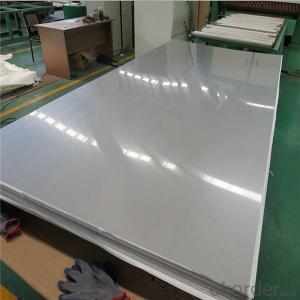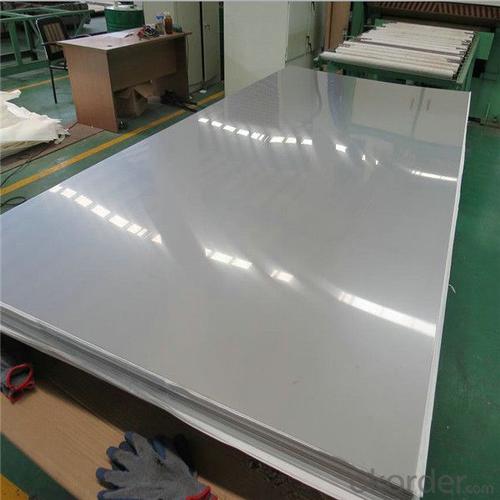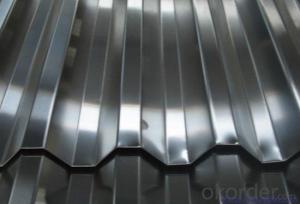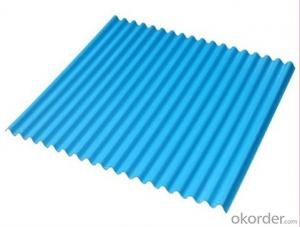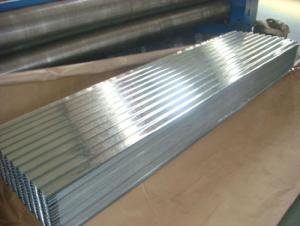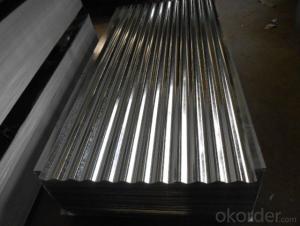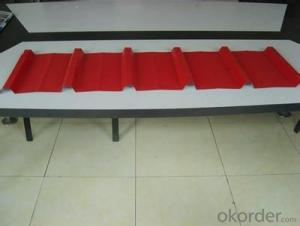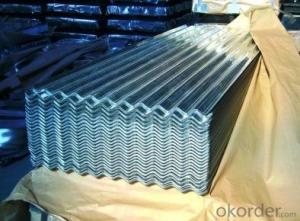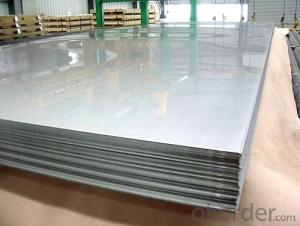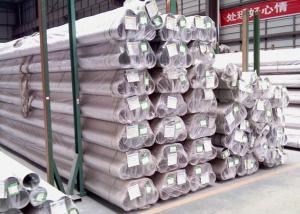Stainless Steel Plate with high quality
- Loading Port:
- Shanghai
- Payment Terms:
- TT OR LC
- Min Order Qty:
- 4 m.t.
- Supply Capability:
- 20000 m.t./month
OKorder Service Pledge
OKorder Financial Service
You Might Also Like
Specification
product description
hard 3Cr13 stainless steel plate/sheet for direct sale
Materials | 200, 300,400, series |
Standard | ASTM, DIN JIS GB etc |
Certification | ISO |
Length | in coil |
weight
OD | 3--5tons
508--610mm |
Width | 20—600 mm all available Also could do as customers’ requirements
|
Technique | Cold rolled Hot rolled
|
Surface treatments | Oil printing Black printing Also could do as customers’ requirements |
surface | 2B/No1/BA/ 8K mirror/Ink Brushed/Hairline/ Color/ Embossed.Etc
|
Payment terms | L/C,T/T, Western Union |
FOB price
MOQ | 1000—4100 USD/TON we can provide a discount if you buy a big amount beyond 50 ton
5 tons /meet your special requirements |
Delivery term | 7—10days after receive the deposit |
Application | Widely used in industry, decoration, building construction, cans
|
Packing |
|
Container information | 20ft GP:5898mm(Length)x2352mm(Width)x2393mm(High) 40ft GP:12032mm(Length)x2352mm(Width)x2393mm(High) 40ft HC:12032mm(Length)x2352mm(Width)x2698mm(High)
|
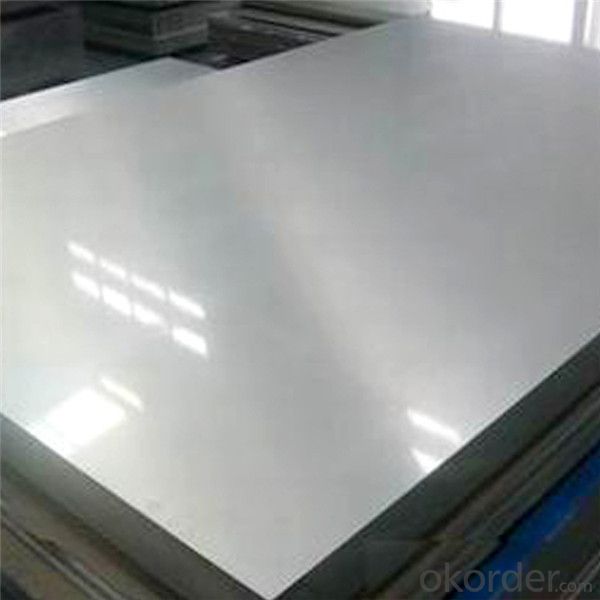
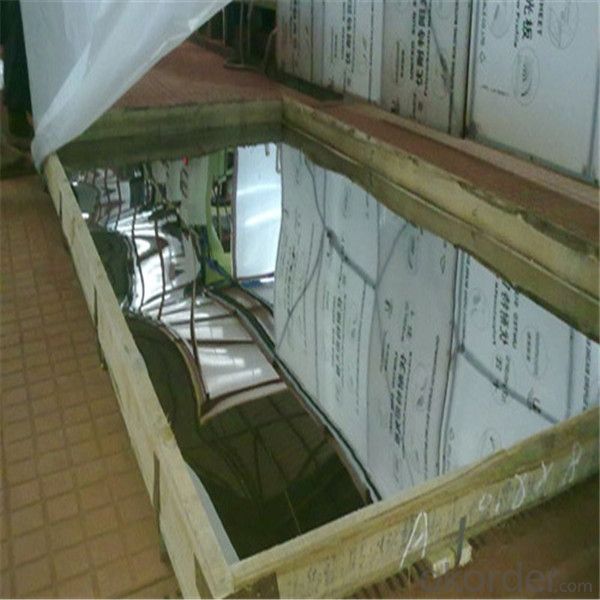
- Q: What are the factors to consider when selecting the right grade of stainless steel sheet?
- When selecting the right grade of stainless steel sheet, there are several factors that should be considered. First and foremost, it is important to consider the intended application of the stainless steel sheet. Different grades of stainless steel have varying levels of corrosion resistance, strength, and temperature resistance. Therefore, understanding the specific requirements of the application, such as exposure to corrosive environments or high temperatures, is crucial in selecting the appropriate grade. The next factor to consider is the desired appearance and finish of the stainless steel sheet. Some grades of stainless steel are more suitable for achieving a highly polished or mirror-like finish, while others are better suited for a brushed or matte appearance. Additionally, certain grades may be more resistant to scratching or showing fingerprints, which can be important in applications where aesthetics are a priority. Cost is another important factor to consider when selecting the right grade of stainless steel sheet. Different grades of stainless steel can vary significantly in price, depending on factors such as the alloying elements used, manufacturing process, and availability. It is important to balance the desired properties and performance of the stainless steel sheet with the available budget. The ease of fabrication and welding is also a critical factor to consider. Some grades of stainless steel are more easily machinable and formable than others, making them better suited for certain fabrication processes. Similarly, certain grades have better weldability, which can be important in applications where welding is required. Lastly, it is important to consider the availability and sourcing of the selected grade. Some grades of stainless steel may be more readily available in certain regions or from specific suppliers. It is important to ensure that the selected grade can be easily sourced to avoid delays or increased costs in the supply chain. In conclusion, when selecting the right grade of stainless steel sheet, factors such as the intended application, desired appearance, cost, ease of fabrication and welding, and availability should all be carefully considered. By evaluating these factors, one can make an informed decision and select the most appropriate grade of stainless steel sheet for their specific requirements.
- Q: Are stainless steel sheets suitable for architectural louvers or screens?
- Yes, stainless steel sheets are suitable for architectural louvers or screens due to their durability, corrosion resistance, and aesthetic appeal. They provide a sleek and modern look while also offering protection against weather elements, making them a popular choice for architectural applications.
- Q: How thick is 10gauge in stainless steel plate?
- The word "gauge" is interesting. This term is often seen in articles reading about metal roofs. It is not a unit of measurement, but a standard measure of width or thickness.
- Q: How to clean stainless steel plate cleaning?
- The mild way to clean stainless steel is simply to use hot water and clean soft cloth to wipe the surface, and then use dry metal with other soft cloth to prevent water stains thoroughly. I'm surprised at how much dirt on the surface comes to my pizza oven, just this step. When using this or any other way, please remember, "grain" stainless steel has run the whole surface in one direction on the minor groove metal and its best grain, rather than across it clean. Some people will tell you that this is to avoid scratching the metal or lodging the dust particles in the foods, where they can cause rust to form. This is likely to be true, but scrubbing food seems to be easier and more effective.
- Q: What are the common types of corrosion that affect stainless steel sheets?
- There are several common types of corrosion that can affect stainless steel sheets. One of the most common types is known as pitting corrosion. Pitting corrosion occurs when localized areas of the stainless steel surface become damaged, resulting in small pits or holes. This type of corrosion is typically caused by exposure to chlorides, such as saltwater or certain chemicals. Another common type of corrosion is known as crevice corrosion. Crevice corrosion occurs in tight spaces or crevices where oxygen and other corrosive agents may become trapped. This can happen in areas where stainless steel sheets are joined or in areas where dirt, debris, or moisture can accumulate, creating an environment conducive to corrosion. Galvanic corrosion is another type that can affect stainless steel sheets. This occurs when stainless steel comes into contact with a dissimilar metal in the presence of an electrolyte, such as moisture. The difference in electrical potential between the two metals can result in a flow of electrical current, leading to corrosion of the stainless steel. Stress corrosion cracking is a type of corrosion that occurs under tensile stress, combined with exposure to a corrosive environment. This type of corrosion can cause cracking or fracturing of stainless steel sheets, compromising their structural integrity. Lastly, intergranular corrosion is a type of corrosion that occurs along the grain boundaries of stainless steel. This can result from improper welding practices, exposure to high temperatures, or chemical exposure. Intergranular corrosion can weaken the stainless steel sheets and make them more susceptible to other forms of corrosion. It is important to consider these common types of corrosion when working with stainless steel sheets, as they can impact the performance and durability of the material. Proper maintenance, regular inspections, and appropriate corrosion prevention measures can help mitigate the risk of corrosion and prolong the lifespan of stainless steel sheets.
- Q: How do you remove rust or corrosion from stainless steel sheets?
- To remove rust or corrosion from stainless steel sheets, you can follow these steps: 1. Start by cleaning the surface of the stainless steel sheet with a mild detergent and warm water. This will remove any dirt or grease that could potentially interfere with the rust removal process. 2. After cleaning, thoroughly dry the sheet to prevent any further water damage and to ensure the rust removal process is effective. 3. Next, use a non-abrasive scrubbing pad or a soft cloth to apply a stainless steel cleaner or a homemade solution made of equal parts vinegar and water. Gently rub the affected area in the direction of the grain of the stainless steel. 4. If the rust or corrosion persists, you can try using a paste made of baking soda and water or a mixture of cream of tartar and water. Apply this paste to the affected area and let it sit for about 15 minutes. Then, scrub the area gently with a soft cloth or a non-abrasive scrubbing pad. 5. If the above methods do not fully remove the rust or corrosion, you can try using a commercial rust remover specifically designed for stainless steel. Be sure to follow the instructions provided by the manufacturer and use appropriate safety precautions. 6. After removing the rust or corrosion, rinse the stainless steel sheet thoroughly with clean water and dry it completely to prevent any water spots or further damage. 7. To prevent future rust or corrosion, it is recommended to regularly clean and maintain stainless steel surfaces using non-abrasive cleaners and avoiding harsh chemicals or abrasive materials. Remember to always test any cleaning solution or rust remover on a small, inconspicuous area of the stainless steel sheet before applying it to the entire surface, to ensure it doesn't cause any damage or discoloration.
- Q: How do I calculate the strength of stainless steel sheets?
- To calculate the strength of stainless steel sheets, you need to consider factors such as the material's tensile strength, yield strength, and thickness. Tensile strength refers to the maximum amount of stress a material can withstand before it breaks, while yield strength is the maximum stress the material can endure without permanent deformation. Additionally, the thickness of the sheet will also affect its overall strength. By referring to the specifications provided by the manufacturer or consulting relevant engineering resources, you can determine the specific strength values for the stainless steel sheets you are working with.
- Q: Can stainless steel sheets be used for heat exchangers?
- Yes, stainless steel sheets can be used for heat exchangers. Stainless steel has excellent corrosion resistance, high thermal conductivity, and good mechanical properties, making it an ideal material choice for heat exchanger applications.
- Q: How do I choose the appropriate gauge for stainless steel sheets?
- There are several factors to consider when deciding on the appropriate gauge for stainless steel sheets. Firstly, it is important to determine the purpose or application of the sheets. Specific gauges are suitable for different uses. For instance, thinner gauges (higher numbers) like 26 or 28 are commonly used for decorative purposes, while thicker gauges (lower numbers) such as 14 or 16 are more suitable for industrial applications that require strength and durability. Secondly, the environment in which the sheets will be used should be taken into account. If the sheets will be exposed to harsh conditions like high temperatures, corrosive chemicals, or heavy impact, it is advisable to choose a thicker gauge to ensure they can withstand these conditions. Moreover, the size and shape of the stainless steel sheets should also be considered. Larger sheets or those with complex shapes may require thicker gauges to prevent bending or warping. Lastly, budget limitations may impact the gauge selection. Thicker gauges generally come at a higher cost than thinner ones, so finding a balance between desired strength and available budget is important. To summarize, when choosing the appropriate gauge for stainless steel sheets, consider the application, environmental conditions, sheet size and shape, and budget. It is also recommended to seek guidance from a professional or supplier who can provide tailored advice based on your specific needs.
- Q: How do I prevent discoloration on stainless steel sheets?
- To prevent discoloration on stainless steel sheets, there are a few measures you can take: 1. Regular cleaning: Stainless steel sheets should be cleaned regularly using mild soap or a stainless steel cleaner. Avoid using abrasive cleaners or scrubbing brushes, as they can scratch the surface and make it more prone to discoloration. 2. Avoid harsh chemicals: Avoid using harsh chemicals, bleach, or chlorine-based cleaners on stainless steel sheets, as they can cause discoloration. If any spills occur, clean them immediately to prevent staining. 3. Proper ventilation: Ensure proper ventilation in the area where stainless steel sheets are installed. This is especially important in areas where chemicals or fumes are present, as they can react with stainless steel and cause discoloration. 4. Protective coatings: Applying a protective coating to stainless steel sheets can help prevent discoloration. There are various protective coatings available in the market designed specifically for stainless steel. These coatings create a barrier between the steel and external factors, reducing the chances of discoloration. 5. Regular maintenance: Regularly inspect the stainless steel sheets for any signs of discoloration or damage. Address any issues promptly to prevent further deterioration. By following these preventative measures, you can minimize the risk of discoloration on stainless steel sheets and maintain their aesthetic appeal for a longer period.
Send your message to us
Stainless Steel Plate with high quality
- Loading Port:
- Shanghai
- Payment Terms:
- TT OR LC
- Min Order Qty:
- 4 m.t.
- Supply Capability:
- 20000 m.t./month
OKorder Service Pledge
OKorder Financial Service
Similar products
Hot products
Hot Searches
Related keywords
